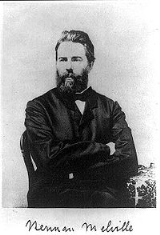
writer, essayist, and poet. He is best known for his novel Moby-Dick
and the posthumous novella Billy Budd
.
His first three books gained much contemporary attention (the first, Typee
, becoming a bestseller), and after a fast-blooming literary success in the late 1840s, his popularity declined precipitously in the mid-1850s and never recovered during his lifetime.
Indolence is heaven’s ally here,And energy the child of hell:The Good Man pouring from his pitcher clearBut brims the poisoned well.![]()
It was not a very white jacket, but white enough, in all conscience, as the sequel will show.The way I came by it was this...![]()
Many sensible things banished from high life find an asylum among the mob.![]()
Familiarity with danger makes a brave man braver, but less daring. Thus with seamen: he who goes the oftenest round Cape Horn goes the most circumspectly.![]()
In time of peril, like the needle to the loadstone, obedience, irrespective of rank, generally flies to him who is best fitted to command.![]()
We Americans are the peculiar, chosen people — the Israel of our time; we bear the ark of the liberties of the world. ![]()
A man of true science... uses but few hard words, and those only when none other will answer his purpose; whereas the smatterer in science... thinks, that by mouthing hard words, he proves that he understands hard things.![]()

